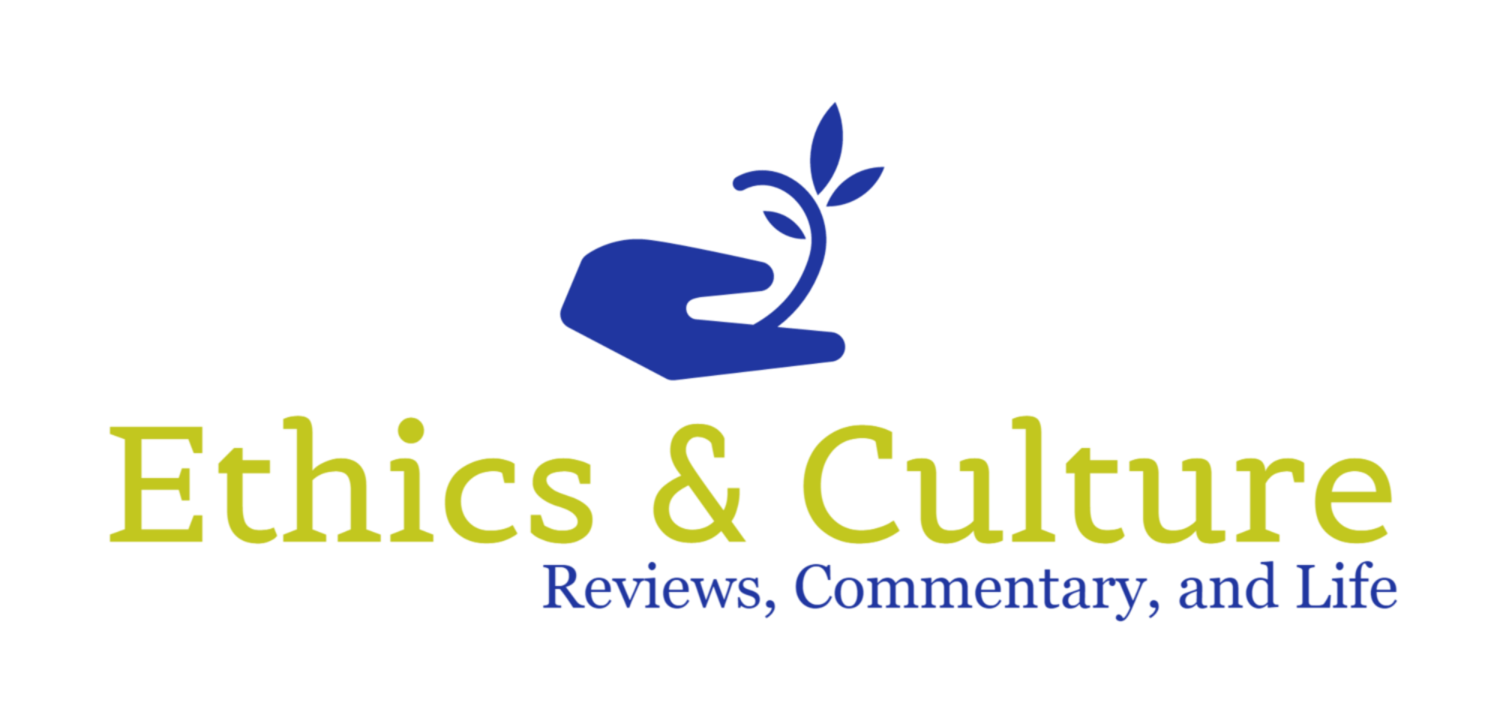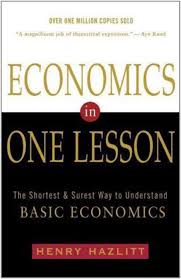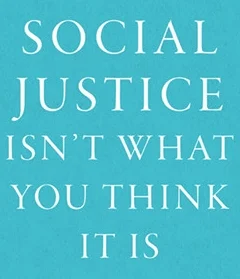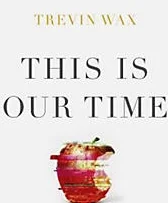The reaction to Peterson has been polarized both from Christians and non-Christians. He seems to a sort of Rorschach Test that draws predictable reactions from the same old crowds.
Peterson’s rise to public notoriety came when his resistance to a speech control law in Canada hit the news. He indicated that he would resist the law requiring him to use sexually dysphoric people’s preferred pronouns. This resistance was widely publicized even though Peterson made it clear that his opposition is to the legal mandate of a certain accepted civility rather than a disapproval of transgenderism or even a desire to offed—in fact, he indicated he would use people’s preferred pronouns when they requested.
Normally this sort of resistance to the Zeitgeist comes from people that are quickly exposed as “uncultured,” “boorish,” or “ignorant” by the media. This sort of rejoinder tends to result in being celebrated by one cable news channel, ridiculed by another, and disappearance after a week or so. Even tenured professors like Peterson are usually subdued, squashed, and even fired after expressing cultural opinions like the ones he has offered.
That has not happened with Peterson. Instead, his appeal has broadened, he has weathered the storm, and he continues to have a voice in the public square.
A significant reason Peterson has been able to maintain his position is that he seems uniquely equipped to handle the rhetoric and bustle of our knuckle dragging media culture. In an extremely hostile BBC4 interview, where the interviewer intentionally misrepresents his position repeatedly, he remains calm, corrects her, and even manages to get her to stop and think. Most cultural rebels spontaneously combust in confrontation because they lack the self-control and reasoned care that Peterson demonstrates.
If there is only one thing Christians can learn from Peterson, it is how to manage controversy in this age of garbled communication and bloviating. He manages to hold well-reasoned views publicly and generally not get drawn into shouting matches or bluffed into silence. He communicates clearly and his words are carefully chosen and well-considered.
Of course, his resistance to the identity politics of the left, including his open scorn of some of the pseudo-disciplines in academia like feminist studies and its variants, has made him a darling of a growing, vocal, and toxic group of people on the political right. Some like Peterson because he delivers what they most want—liberal tears.
One danger for Peterson and his fans is getting sucked into the vortex of sewage in the nationalist right and alt-right. These groups are cheering Peterson as a long-awaited hero. This increases the left’s hatred for him and may draw some well-meaning Peterson fans beyond what he seems to intend.
To be clear, based on my reading of Peterson and what I’ve seen of his videos, he does not support the ideologies of nationalists, overt racists, and conspiracy theorists. In fact, he is careful to set limits on what he is and is not saying. However, we’ve so deeply drunk from the well of belief that the enemy of my enemy is my friend and the friend of my enemy is my enemy that Peterson serves as a scapegoat or talisman for groups that haven’t really considered what his message is.
Peterson and Christianity
The reception of Peterson among Christians has been similarly mixed. Among revisionist Christians who generally accept and promote whatever counter-Christian social mores the culture adopts as a matter of course, Peterson is anathema for not agreeing with them. However, among orthodox Christians, the opinion of Peterson is widely varying.
There is good reason for both positive and negative reception of Peterson’s message. It depends on why Peterson’s message is received and what the recipient is intending to glean.
For example, Peterson’s resistance to the cultural tide of the domination of supposedly oppressed ideologies is helpful. He has showed that it is possible to resist the current manias of our day and yet survive. Also, Peterson seems to be honestly seeking the good of his audience, particularly young men who have been told they are oppressive and evil simply for being men. He speaks with a sort of compassion and in that way represents a good and helpful voice for our time.
On the other hand, Peterson represents a dangerous temptation to some Christians who are more interested in a certain place in society than truly orthodox belief. Peterson is well-versed in Western culture and has a good grasp on the Bible as literature. He interprets the Bible using the methods common among theological liberals of the late nineteenth and early twentieth centuries. In other words, there is a strong Judeo-Christian ethic and an invigorating call to arms based on the canon in Peterson’s message, but it denies essential elements of Scripture, like miracles, the resurrection, and the supernatural in general. Some Christians may follow Peterson and pick up well-reasoned resistance to cultural tides in some areas while imbibing unhealthy theology in the other—and that error may cause confusion in the pews.
The task for the discerning Christian is to learn what can be learned from Peterson, while resisting the error. This means that pastors and leaders within orthodox congregations should not rush to recommend Peterson’s work to immature believers, because it may be caustic to their faith.
A Review of 12 Rules for Life
12 Rules for Life: An Antidote to Chaos is Peterson’s second book. His first, book Maps of Meaning is a much more academic volume that was released in 1999. Peterson is both a professor and a practicing clinical psychologist, which seems to have previously directed his efforts toward the counseling room rather than the written word.
According to the introduction, this volume sprang out of a post Peterson wrote on a website called Quora, where anyone can pose a question, anyone can answer, and the crowd votes to approve or disapprove the answer. He provided a lengthy list, some serious, some humorous, of responses to the question, “What are the most valuable things everyone should know?” Peterson’s answer went viral and, after Peterson himself went viral over the political correctness law, he got a book deal that resulted in this volume.
There is nothing earth shattering about his rules, but the reception of this advice indicates he has struck a nerve with people that want to live well, but don’t know how. As a general rule, the advice is pretty good, too.
Most of the “rules” are just good advice: Present yourself well, because you’ll be treated better and have more opportunities. Don’t hang out with people that will harm you and drag you down. Discipline your children appropriately, using the means with the lowest force possible. Stop worrying about everyone else and their problems if your life is in shambles. Tell the truth and do not lie for any reason. Celebrate the joy of life in others, especially kids, as they explore the world around.
Although I would qualify some of the rules Peterson offers, they are generally pretty good advice. For example, one thing I would qualify is that Peterson advocates staying away from people that will harm you. This is good advice to a certain extent, because it keeps people out of trouble. However, it may cause some readers to avoid the sorts of people that most need help and lash out in their confusion. There is plenty of meat in the rules, but the reader must be prepared to spit out a few bones.
I won’t take the time to summarize each of the rules and critique them, since the list from the table of contents fairly indicates the content of each. It is worth discussing the general framework behind the rules.
Peterson’s Philosophical Foundations
Peterson is a Jungian Existentialist. Jung was a contemporary of Freud and generally friendly, but Jung’s philosophy (the underpinnings of his psychology) took a different turn. Instead of focusing on repressed sexual urges and presuming an Oedipus complex in everyone, Jung built on the evolutionary thinking of his day to build a theory of collective human consciousness arising from our ancestral heritage.
The key to understanding both the benefits and dangers of Peterson rest in knowing a bit about Jung. I am certainly no expert, but a quick bout of internet research shows that Peterson has done little more than modernize and popularize some of the core tenets of Jung’s thinking.
Much of the argument in Peterson’s book assumes that proper human behavior is based on a collective consciousness from evolutionary theory. Thus, Peterson defends hierarchy by noting that even relatively simple creatures like lobsters have a hierarchy, therefore humans should anticipate hierarchy in their social orders and reject the notion that there can be a perfectly egalitarian society.
This sort of argument is what angers Peterson’s critics on the left, because to their ears, Peterson affirms the evils of the patriarchy, inequality, and everything they dislike about our current social order. Since Peterson actively rejects the notion that patriarchy, sex difference, and white power are solely responsible for all the ills of this contemporary age, his critics on the left equate his arguments with the Alt-Right, Fascism, and whatever else they happen to hate that day.
It is pretty clear from reading him that Peterson is not arguing for anything like an Alt-Right position, despite attempts to paint him in that corner. His position is much more reasoned and more nuanced. Privilege exists, but this is majority privilege, not specifically white privilege. Therefore, the response should not be to shame white people for their genetic makeup, but to teach people to navigate the power structures to overcome privilege.
On this point, Peterson’s common-sense approach with a hefty dose of personal accountability will be attractive to many conservatives—both Christian and non-Christian. Yet, this is also the point at which Christians need to be the most careful in imbibing or spreading his message because it is entangled in a form of the naturalistic fallacy. Peterson assumes that what is in evolutionary history helps reveal what ought to be, as if humans have reached a sort of pinnacle of development based on everything that has gone before. If absorbed without due caution, such belief can justify a lack of compassion for the poor and the weak who “deserved it” or were simply bound by genetic misfortune to be at the bottom of the heap.
A second point of caution, which also arises from his Jungian foundation, is on the use and truthfulness of myths. In concert with many scholars, particularly German scholars that were his contemporaries, Jung taught that religions were explanatory myths that developed from the collective human experience. Christianity was a more advanced religion, but that is not because it is true, simply because it has more truth encoded in its scriptures and practices than earlier religions.
Such an approach enables Peterson to decode the Bible and other ancient texts to reveal psychological truths that can be applicable today. Christians should be careful embracing Peterson on this count, because he is teaching Enlightenment hermeneutics with an evolutionary twist that ascribe value to the text but deny its supernatural power.
Peterson’s overt and public use of Scripture, however, does show that preachers that believe they need to pull the Bible out of their sermons and not refer to it as authoritative to communicate to people in this day and age are sorely mistaken. It is worth watching some of Peterson’s talks to see how he uses Scripture to make a compelling case for his positions. Teachers should be careful not to adopt the bad hermeneutic, but his method of communication is helpful.
A third cause for caution is the existentialist framework that Peterson brings to the table from his Jungian base. In brief, existentialism relies on the idea that we are making meaning and that our essence is formed by our choices. This is a much better philosophical position than nihilism, which presumes there is no meaning or truth in life, but it is dangerously anthropocentric.
Many of the critiques of Peterson from the left are attacks on his existentialism from nihilists. They have reduced life to a meaningless pursuit of individual power and autonomous individualistic freedom. Therefore, Peterson’s more optimistic—or perhaps stoic—existentialism creates difficulties for them, particularly since Peterson points to meaning not in creating hegemonies to subjugate the presumed powerful under the whims of the self-identified oppressed. Rejecting the oppressive force of the supposedly downtrodden, which Peterson does often, makes him persona non grata in the world of identity politics.
This is exactly the place where Peterson is both most attractive to conservative Christians and the most risky. He is effective at resisting the progressive movement, but he does it for the wrong reasons. Christians can learn from Peterson, but have to be careful to not swallow the existentialism he is teaching. Though there have been Christian existentialists (e.g., Kierkegaard) who are helpful, that epistemology does not entirely line up with Scripture. We are not meaning makers, we discover the meaning that God has already woven into the universe, revealed in creation and, more clearly, in Scripture.
Peterson seems like a hero to many on the right because he is effective in frustrating the bullying of the progressive left. He may be an ally in that cause, and his methodology may be informative, but we should be careful of adopting his whole worldview because it is not one that has been well-formed and seasoned by God.
Conclusion
Church leaders should consider reading this volume and watching some of Peterson’s videos for several reasons.
First, Peterson has obviously struck a nerve with a broad swath of people. Though we should not run after every earthly trend to copycat it, he’s found an audience hungry for meaning and is giving it to them. We should consider how the church can offer true meaning rooted in the cross of Christ.
Second, Peterson is an example of communicating counter-cultural ideals carefully, clearly, and well. His rhetoric—especially his ability to maintain his poise when attacked—is something pastors, teachers, and average Christians will only need more skill at in the future.
Third, Peterson reveals that teaching the Bible in public to non-Christian audiences is not off-limits. He teaches his version of theology with boldness and clarity. We have the better message, let’s see what can be gleaned from his tools.
Fourth, the Peterson phenomenon is fairly well recognized. This book could be the contact point in a deeper conversation leading to evangelism. There will be young men in your church reading and watching Peterson, leaders need to be aware of him to help the flock sort out the good and the bad.
At the same time, Christians should be cautious in rushing to celebrate Peterson too fully. There is a lot of good, but it is wrapped in old time theological liberalism. We can do better. But we have to do better, and Peterson’s advice would be for us to continue to do better. So, let’s do that as we find meaning in the good news of Jesus Christ.






























There’s no reason to doubt that Jesus was nailed to the cross. Ultimately, I trust what Scripture says about Jesus’s crucifixion because I also trust what it says about his resurrection. And that’s what we should be celebrating this week.